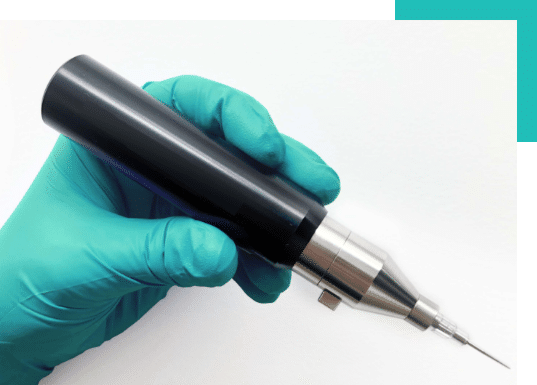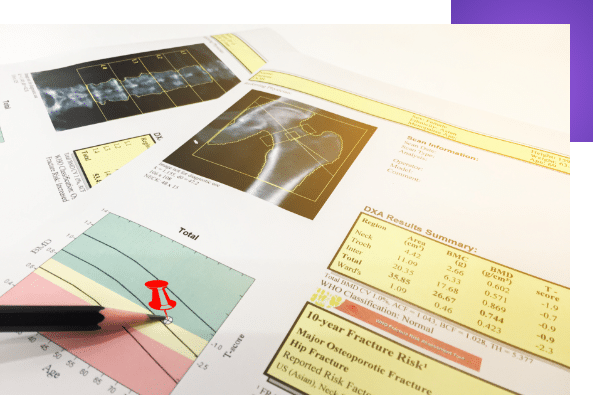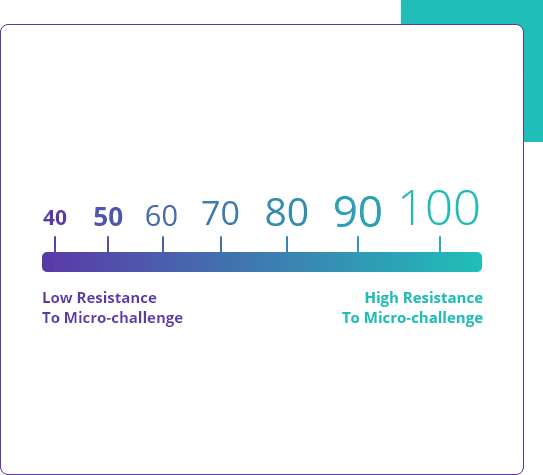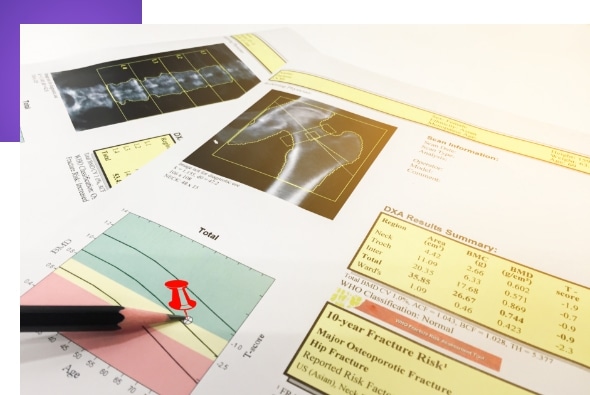BoneScore® for Physicians
BoneScore® is the first FDA cleared direct measurement of bone. It quantifies how a patient’s bone responds to a direct, physical interaction. Furthermore, this new data point can be tracked over time to observe changes in bone due to lifestyle, aging, or other actions.
There’s more to bone strength than density.
Strong healthy bones require good structure, adequate mineral density, and good tissue quality. Currently, bone health is only assessed through indirect imaging methods like DXA. DXA offers no information about how the tissue is functioning, or the quality of the tissue material. Other imaging (e.g., CT Scan/MRI) gives insight into structure but also fails to quantify tissue function and quality.1-3
The assessment of tissue quality remains elusive.
Tissue quality is a composite of properties that make bone resist fracture, such as its microarchitecture, accumulated microscopic damage, the quality of collagen, mineral crystal size, and bone turnover.3 The question for you is how to measure these properties in your clinic. The short answer is: you don’t. Instead, you rely on other factors (medical history, family history, etc.) to determine a patient’s bone health.

A direct approach offers new information.
Ultimately you want to answer the question ‘how well will my patient’s bone hold up when it’s challenged (e.g., a fall)?’. BoneScore® is the first and only direct approach to safely and microscopically challenge bone tissue.
BoneScore® enables physicians to directly measure a patient’s bone tissue.
BoneScore® is an in-office procedure that enables you to quantitatively investigate how your patient’s bone feels, or, more specifically, how well the bone tissue resists a microscopic challenge. BoneScore® is a first of its kind data point that, along with other tools, can help you assemble a better understanding of your patient’s bone health.

How BoneScore® Works

BoneScore® is a brief, in-office procedure.
BoneScore® is an in-office procedure performed at the mid-shaft of the anterior tibia. BoneScore® directly feels the bone tissue and quantifies how resistant the bone tissue is to a safe, microscopic challenge.
The BoneScore® procedure results in a simple numerical score.
BoneScore® offers a first of its kind scale to quantify the resilience of bone tissue to a challenge.
Higher Bone Scores reflect greater resistance to the microscopic challenge (i.e., harder) and lower numbers reflect lesser resistance to the microscopic challenge (i.e., softer).
Patient Bone Scores fall between 45 (low) to 105 (high).


Additional data for situations when a patient’s skeletal status is unclear.
Osteoporosis diagnosis and treatment decisions will continue to rely on the established technologies (e.g., DXA) and clinical guidelines. BoneScore® is valuable for situations where a patient’s skeletal status is unclear and additional data is desired. BoneScore® is not intended to be used by itself to diagnose a disease or prescribe a therapy.
1. Licata, A., Bone density vs bone quality: What’s a clinician to do? Cleveland Clinic Journal of Medicine, 2009. 76(6): p. 331-36.
2. Unnanuntana, A., et al., Diseases affecting bone quality: beyond osteoporosis. Clin Orthop Relat Res, 2011. 469(8): p. 2194-206.
3. Felsenberg, D. and S. Boonen, The bone quality framework: determinants of bone strength and their interrelationships, and implications for osteoporosis management. Clin Ther, 2005. 27(1): p. 1-11.
